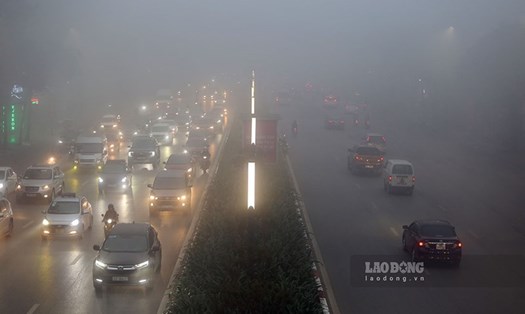On October 10, 1954, tens of thousands of Hanoians burst into joy to welcome the victorious army back, liberating the capital. After the liberation day in 1954, Hanoi was a city that suffered much damage from war and enemy air raids. Infrastructure was heavily destroyed, buildings were seriously damaged. Most people lived in level-four houses or small, cramped apartment buildings lacking electricity and clean water.
Immediately after taking over the capital, the Hanoi Party Committee and government led the people to quickly stabilize the situation and begin to restore and renovate the city. Over the past 70 years, Hanoi has risen to become one of the major cities in Southeast Asia, with a fast and sustainable economic growth rate, truly a thousand-year-old capital.
70 years ago, the main means of transportation were bicycles, cyclos and very few public vehicles. Roads such as Nguyen Thai Hoc, Trang Thi… were still very narrow, many places were just dirt roads or paved with bricks. Long Bien Bridge was the only bridge across the Red River connecting Hanoi with the northern provinces.
Currently, Hanoi has 8 bridges across the Red River. And according to the plan from now to 2030, Hanoi will have a total of 16 bridges across the Red River, creating favorable conditions for seamless connection between economic and political centers; between local areas and satellite cities. Hanoi also focuses on developing a large-volume public passenger transport system, the bus network has reached 30/30 districts, towns and cities. At the same time, urban railway lines have also been put into operation to serve the people, helping to improve traffic congestion.
In the past, traditional market systems such as Dong Xuan and Long Bien markets were the main trading centers of Hanoi. People mainly traded agricultural products and small-scale goods, and commercial services were hardly developed. Now, the capital's commercial and service infrastructure has also developed strongly. Modern commercial centers such as Vincom, Aeon Mall, Lotte, along with supermarkets and convenience stores in all districts have gradually supplemented and replaced traditional markets. Hanoi currently has about 30 commercial centers, nearly 150 supermarkets, 455 markets (both wholesale and retail), thousands of convenience stores, and hundreds of vending machines. In addition, there are tens of thousands of retail households with hundreds of thousands of business establishments.
Hanoi is also promoting information technology infrastructure. The city has stepped up investment in technology infrastructure, developed high-tech parks and research and innovation centers. In addition, Hanoi is actively promoting digital transformation, with the goal of completing 100% of level 4 online public services by 2025, in order to improve the efficiency of state management and create maximum convenience for people and businesses. Over the past years, Hanoi has always maintained good growth and contributed positively to the country's growth.
Hanoi has overcome many difficulties and challenges to achieve steady progress. Thanks to the correct policies and decisions from the Hanoi Party Committee, People's Council, and People's Committee, along with the support of the people, Hanoi's economy has developed strongly, from agricultural and industrial production to services and tourism.
Along with the process of accelerating urbanization and modernization, heritage preservation and cultural development are among the tasks that Hanoi always attaches importance to. Preserving and promoting the value of cultural heritage to promote the development of cultural industry in the capital at present is the responsibility of the entire political system, all levels, all sectors, and the whole society in the spirit of "investing in culture is investing in sustainable development".
The city has invested thousands of billions of VND to restore major relics such as Thang Long Imperial Citadel, Temple of Literature - Quoc Tu Giam...; Thanks to that, although the capital has developed in a modern direction, its appearance has changed greatly, Hanoi still retains its profound cultural characteristics, through the system of old streets...













